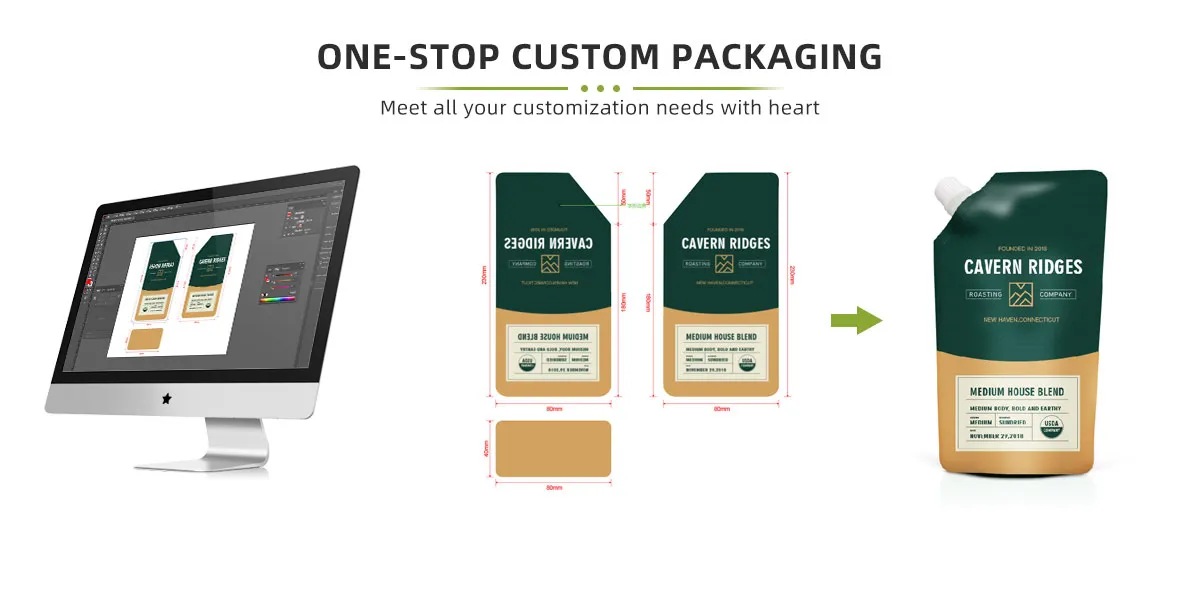Introduction
In today’s fast-paced world, consumers and manufacturers demand packaging that is lightweight, durable, and shelf-stable. One of the most innovative solutions meeting these needs is the aluminum foil retort pouch. Used for food, pet food, pharmaceuticals, and even military rations, these pouches combine flexibility with high-performance barrier properties.
In this blog, we’ll explore:
✔ What an aluminum foil retort pouch is
✔ Its structure and materials
✔ Key benefits over traditional packaging
✔ Common applications
✔ The retort sterilization process
✔ Future trends in retort pouch technology
What is an Aluminum Foil Retort Pouch?
An aluminum foil retort pouch is a multi-layered, flexible packaging solution designed to withstand high-temperature sterilization (retort processing). Unlike cans or glass jars, these pouches are lightweight, space-efficient, and offer superior barrier properties against oxygen, moisture, and light.
Structure of a Retort Pouch
Retort pouches typically consist of three or more layers:
- Outer Layer (Polyester or Nylon) – Provides durability and printing surface.
- Middle Layer (Aluminum Foil) – Blocks oxygen, light, and moisture, extending shelf life.
- Inner Layer (Food-Grade Polypropylene – PP) – Ensures safe food contact and heat-sealability.
Some advanced versions may include additional layers for extra strength or microwaveability.
Key Benefits of Aluminum Foil Retort Pouches
Why are retort pouches gaining popularity? Here’s why:
✅ Long Shelf Life – The aluminum barrier prevents spoilage, keeping food fresh for up to 2 years or more.
✅ Lightweight & Compact – Uses less storage and shipping space compared to cans or jars.
✅ Retortable (Sterilizable) – Can withstand high-pressure heat treatment (121°C/250°F) to kill bacteria.
✅ Convenient Heating – Many retort pouches are microwave-safe or boilable, eliminating the need for dish transfer.
✅ Eco-Friendlier – Requires less energy to produce and transport than metal or glass packaging.
✅ Customizable Printing – High-quality branding and product information can be printed directly on the pouch.
Common Applications of Retort Pouches
Retort pouches are used across multiple industries:
1. Food Industry
- Ready-to-eat meals (camping food, MREs for military use)
- Sauces, soups, and curries
- Baby food & dairy products
- Seafood & meat products
2. Pet Food Packaging
- Wet and semi-moist pet food
- Treats and supplements
3. Pharmaceuticals & Medical Supplies
- Sterilized medical products
- Liquid medications
4. Specialty Products
- Space food for astronauts
- Emergency survival kits
How Are Retort Pouches Made? The Retort Process
The production of retort pouches involves:
- Pouch Manufacturing – Layers of polyester, aluminum foil, and polypropylene are laminated together.
- Filling – Food or liquid is dispensed into the pouch.
- Sealing – The pouch is hermetically sealed to prevent contamination.
- Retort Sterilization – Sealed pouches are heated under pressure to kill bacteria and spores.
- Cooling & Drying – Pouches are cooled before labeling and packaging.
This process ensures commercial sterility, similar to canning but with greater efficiency.
Retort Pouches vs. Traditional Packaging
| Feature | Retort Pouch | Metal Can | Glass Jar |
|---|---|---|---|
| Weight | ✅ Lightest | ❌ Heavy | ❌ Heaviest |
| Space Use | ✅ Compact | ❌ Bulky | ❌ Bulky |
| Shelf Life | ✅ 2+ years | ✅ 2-5 yrs | ❌ 1-2 yrs |
| Heating | ✅ Microwave-safe | ❌ Requires transfer | ❌ Fragile |
| Cost | ✅ Moderate | ❌ High | ❌ Highest |
Future Trends in Retort Pouch Technology
- Sustainable Materials – Bio-based films to reduce aluminum usage.
- Smart Packaging – QR codes, freshness indicators, and temperature sensors.
- Microwave-Safe Innovations – Improved films for even heating.
- Wider Adoption in Pharmaceuticals – For sterile medical and nutraceutical products.
Welocme contact us to get your proposal packaging solutions
